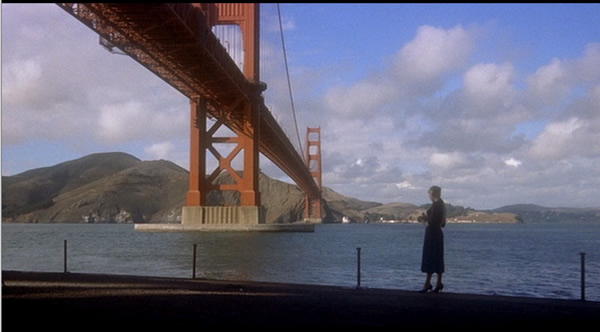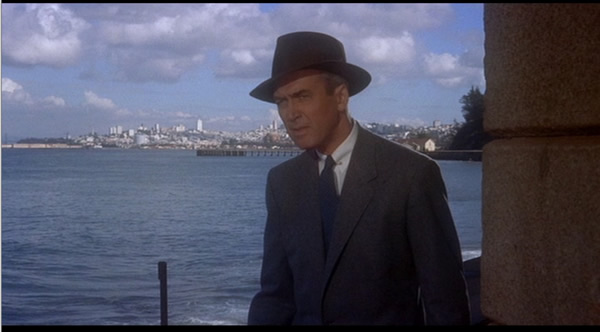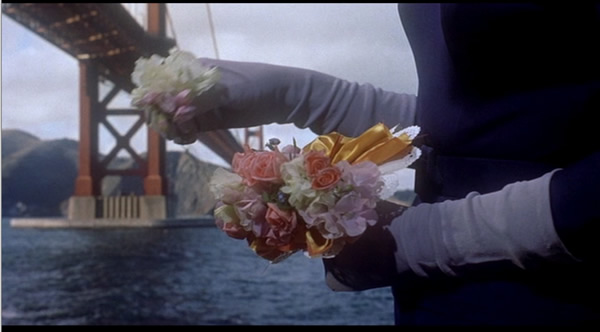Point of View
Point of view shots appear in many films but Vertigo takes it to a whole new level. Carroll analyzes the way point of view works, claiming there are three parts which make it so effective: 1) its exploitation of an innate human tendency to follow glances to their targets 2) communication of emotion effectively due to reliance upon facial recognition and 3) generic perceptual responses (123). The consistent close ups of Scotty’s face give the audience an amazingly deep emotional link to him. As he trails Madeleine for the first time, there are no words, only shot/reverse shots accompanied by Herrmann’s tense and suspenseful score (excerpt from "Scotty Trails Madeleine") which takes us deeper into the story and into identification.

The POVs add another layer of reverse shot so that the audience knows specifically to what Scotty is reacting. We are led by Hitchcock to see absolutely through Scotty's eyes.

For example, several times the audience sees him look, sees what he’s looking at, sees him squint, and then sees a close up on what he’s focusing.

This specificity allows viewers something even more concrete to hold onto as they start spinning into emotional confusion with our main character. ("Scotty Trails Madeleine"-the eeriness also represents how Scotty feels about Madeleine's case thus far, aligning the audience with his mindset further). Wood says “we watch Madeleine continually through his eyes, her distance, her silence, his and our inability to understand her, help her, protect her, are all part of the fascination.” (114). The more we see Scotty’s perspective the more we align ourselves with him.